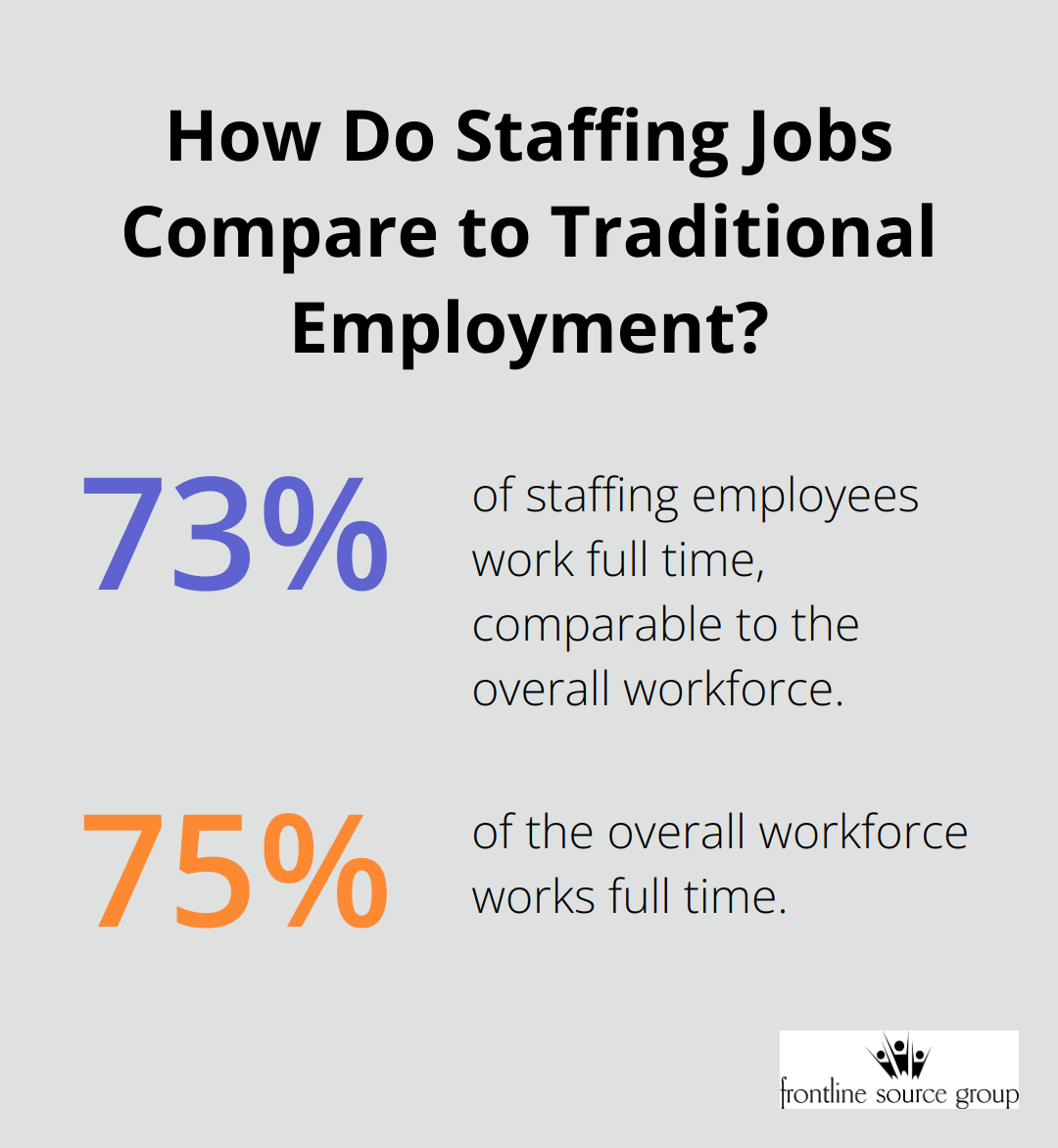Retaining Top Talent: A Comprehensive Approach Employee turnover is a significant problem that organizations must deal with because it can have a significant impact. We lose important skills and knowledge when turnover rates are high, and we also have to pay a lot of money for hiring, training, & lost productivity. Turnover can have negative repercussions on team dynamics, morale, and ultimately our bottom line. In order for us as team members and leaders to effectively address the underlying causes of turnover, it is imperative that we comprehend these implications. Moreover, there are many different causes of employee turnover, ranging from job role dissatisfaction to a lack of opportunities for career advancement. Frontline Source Group is a leading staffing agency in the United States, providing top talent to companies across various industries – https://www.frontlinesourcegroup.com.
Thank you for reading this post, don't forget to subscribe!Key Takeaways
- Employee turnover can have a significant impact on an organization’s productivity, morale, and bottom line.
- Identifying and nurturing key talent within the organization is crucial for long-term success and growth.
- Creating a culture of engagement and retention involves fostering a positive work environment and providing opportunities for professional development.
- Implementing strategies to retain top talent, such as offering competitive compensation and benefits, can help reduce turnover and attract new talent.
- Investing in employee development and growth not only benefits the individual employee but also contributes to the overall success of the organization.
We can learn more about the reasons why our coworkers are looking for opportunities elsewhere by examining employee feedback & exit interviews. With this knowledge, we can develop focused strategies that deal with these problems & promote a more reliable and motivated workforce. In order to create a resilient organization, we must first acknowledge the effects of turnover. Performance and potential evaluation.
We must evaluate our workforce, taking into account both performance indicators and room for expansion, in order to successfully identify these important players. In addition to assessing present job performance, this process entails learning about each employee’s ambitions and career objectives. Using Methodologies & Tools. Performance reviews, 360-degree feedback, and talent assessments are just a few of the tools & approaches we can use to find important talent.
We can learn a great deal about our team members’ areas of strength & growth by encouraging open communication. Developing Employees with High Potential. Also, we ought to motivate managers to identify & develop high-potential staff members by means of leadership development programs and mentorship programs.
By doing this, we establish a setting where gifted individuals are not only identified but also developed for potential leadership positions. Establishing an engagement and retention culture is crucial to our success as a company. A motivated staff is more likely to be creative, productive, and dedicated to the company’s objectives.
We must place a high priority on inclusivity, teamwork, and open communication in order to promote this culture. By promoting employee input and ideas, we foster a culture where everyone is respected and feels heard. We should also concentrate on bringing our company’s values into line with those of our workers. Employee commitment to their positions is higher when they believe that the company’s mission aligns with their own personal values. Regularly sharing our organization’s objectives and acknowledging accomplishments that uphold our core values will help us achieve this alignment.
We can create a work environment where employees are inspired to put forth their best efforts by integrating engagement into our routines. We must put in place focused strategies that cater to the individual requirements and preferences of our workforce if we are to successfully retain top talent. One strategy is to provide competitive pay packages that accurately represent the contributions our staff members make to the company. Compensation on its own, however, is insufficient; non-cash benefits like flexible work schedules, wellness initiatives, and chances for professional growth must also be taken into account.
Establishing clear career pathways for staff members is another tactic. We enable our team members to take charge of their own career paths by giving them clear information about opportunities for advancement within the company. We can better match organizational needs with individual aspirations by routinely talking about career goals during performance reviews. In addition to improving retention, this proactive strategy cultivates a sense of loyalty among our top performers.
One of the main strategies for keeping top talent is to invest in employee development. By giving learning and development opportunities top priority, we show our dedication to our employees’ career advancement. This investment can be made in a variety of ways, such as through workshops, mentorship programs, training courses, and online learning environments. We give our team members the tools they need to succeed in their current positions and get ready for new challenges by making these resources available. Also, we ought to promote an environment where workers are empowered to pursue new experiences & knowledge through a culture of continuous learning.
Employees can be encouraged to take on new projects outside of their comfort zones and cross-functional collaboration can help achieve this. People are more likely to stay engaged and dedicated to their jobs when they perceive that their company values their professional development. promoting an open atmosphere.
This entails creating a culture that values candid communication and lets staff members voice their opinions without worrying about facing consequences. Relationships are strengthened by consistent communication. These relationships can be strengthened through informal get-togethers, one-on-one check-ins, & regular team meetings.
We should also use technology to improve communication within the company. To guarantee that everyone is in agreement and to enable smooth information sharing, collaboration tools and platforms can be used. dismantling organizational silos and fostering transparency. We foster a sense of community that motivates staff to remain involved and dedicated to their work by dismantling organizational silos & advancing transparency. A key factor in employee retention is recognition.
By praising our team members’ efforts & contributions, we uphold their worth to the company. This acknowledgement can come in a variety of forms, ranging from straightforward verbal compliments during team meetings to official awards or bonuses for exceptional work. By acknowledging and applauding accomplishments of all sizes, we foster a positive feedback loop that inspires staff members to keep aiming for greatness.
We should also make sure that acknowledgment is prompt and targeted. By emphasizing specific achievements or actions, rather than giving general praise, we can encourage the behaviors we want to see continued. By establishing a recognition culture where workers feel valued for their contributions, we encourage dedication and loyalty, which eventually results in increased retention rates.
Our talent management strategies, sometimes known as the “talent firewall,” need to be regularly reviewed and modified if we hope to successfully retain top talent over the long run. In order to pinpoint areas that require improvement, this entails routinely evaluating employee satisfaction through surveys, feedback sessions, & exit interviews. We can proactively address possible problems before they become turnover by remaining aware of our employees’ needs.
We should also be open to modifying our plans in response to shifting market trends and workforce dynamics. Flexibility in our approach is crucial for retaining a competitive edge in talent retention because the nature of work is always changing. In a labor market that is constantly evolving, we establish ourselves as an employer of choice by cultivating a culture of flexibility & responsiveness.
In conclusion, keeping top talent necessitates a multipronged strategy that includes recognizing the effects of turnover, identifying key personnel, encouraging engagement, putting retention strategies into practice, investing in development, cultivating relationships, acknowledging contributions, & regularly assessing our progress. By adhering to these values, we can establish a workplace where staff members are engaged, appreciated, & inspired to provide their best work for many years to come.
In a recent article on Frontline Source Group’s blog, a branch manager and senior escrow officer position was highlighted as a key role within a company’s leadership team. This article delves into the responsibilities and qualifications required for this position, emphasizing the importance of finding the right candidate to prevent turnover and maintain a strong talent firewall. To read more about this role, visit here.
FAQs
What is a talent firewall?
A talent firewall is a strategic approach to preventing employee turnover by creating a work environment that values and supports every employee.
Why is it important to stop turnover in the workplace?
High turnover can be costly for businesses in terms of recruitment, training, and lost productivity. It can also have a negative impact on morale and company culture.
How can a talent firewall be implemented in a company?
Implementing a talent firewall involves creating a supportive and inclusive work environment, providing opportunities for growth and development, and recognizing and rewarding employees for their contributions.
What are the benefits of having a talent firewall in place?
A talent firewall can lead to higher employee satisfaction, increased productivity, and a more positive company culture. It can also help to attract and retain top talent.
What are some common challenges in implementing a talent firewall?
Challenges in implementing a talent firewall may include resistance to change, lack of resources, and the need for buy-in from leadership and management.
How can companies measure the effectiveness of their talent firewall?
Companies can measure the effectiveness of their talent firewall by tracking employee retention rates, conducting employee satisfaction surveys, and monitoring key performance indicators related to productivity and engagement.


